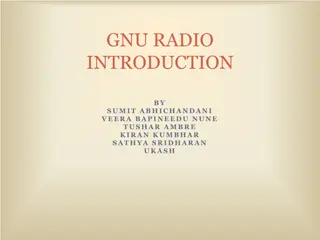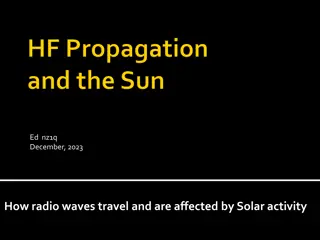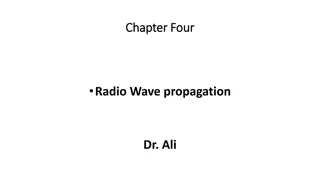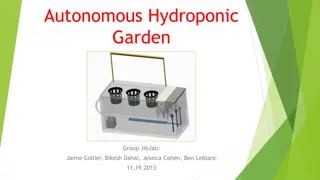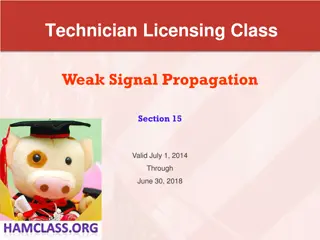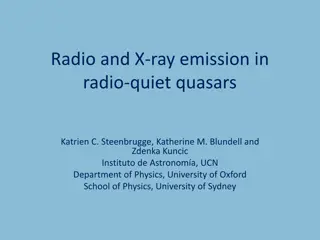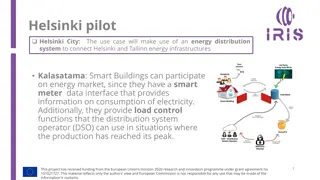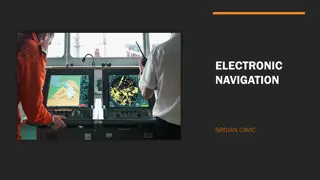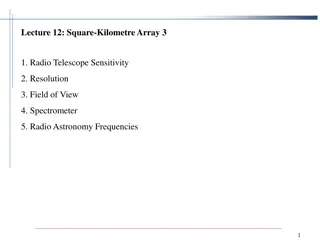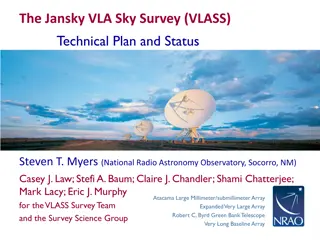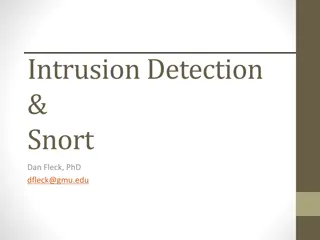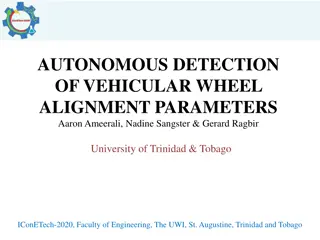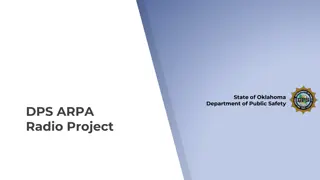Overview of GRANDproto Project Workshop on Autonomous Radio Detection
GRANDproto project workshop held in May 2017 focused on improving autonomous radio detection efficiency for the detection of extensive air showers (EAS). Issues such as detector stability and background rates were discussed, with the goal of establishing radio detection as a reliable method for EAS detection. The workshop covered the layout, antennas, scintillators, and radio array design, highlighting the need for high efficiency and purity in detection. Details about the radio array setup, including antennas with full polarization information, were also presented. The workshop showcased the DAQ system and prototype cards designed for signal processing and data transfer.
Download Presentation

Please find below an Image/Link to download the presentation.
The content on the website is provided AS IS for your information and personal use only. It may not be sold, licensed, or shared on other websites without obtaining consent from the author.If you encounter any issues during the download, it is possible that the publisher has removed the file from their server.
You are allowed to download the files provided on this website for personal or commercial use, subject to the condition that they are used lawfully. All files are the property of their respective owners.
The content on the website is provided AS IS for your information and personal use only. It may not be sold, licensed, or shared on other websites without obtaining consent from the author.
E N D
Presentation Transcript
GRANDproto Principle & Status GRAND WhitePaper workshop IAP, May 16, 2017 Olivier Martineau for the GRANDproto crew: Wu XiangPing, Sandra Le Coz, Gu Junhua, Valentin Niess, David Martin, Jacques David, Charles Timmermans, Ren Habraken, Sijbrand de Jong, Didier Charrier, Gou QuanBu, Wang Zhen, Hu HongBo and local staff @ Ulastai
GRANDproto rationale AERA live time Context: autonomous radio-detection of EAS is a key step for GRAND project. So far autonomous radio detection is performed with limited efficiency only: AERA self triggering ~10% for TREND (see Sandra s talk). Causes: Detector stability (TREND: ~25%) Large background rate kills DAQ live time (TREND & AERA). Air showers selection cuts strongly affect detection efficiency (TREND: ~50%) These can be cured!!! GRANDproto: dedicated set-up for air shower autonomous radiodetection with high efficiency + high purity 2 S. Jensen PhD, Nijmegen, April 2016
GRANDproto layout Antennas Scintillators Radio-array of 35 antennas with 3 arms and dedicated DAQ with 100% duty cycle up to 1kHz trigger rate. Array of 24 scintillators on the radio array site, running independently. Layout designed for optimal detection efficiency for showers coming from North & 30< <70 Scintillator array to be used as an EAS-pure detector for offline cross-check allowing quantitative determination of radio detection efficiency and background rejection performances. Goal: establish radio-detection as a valid tool for autonomous detection of EAS (i.e. detection efficiency + background rejection)
GRANDproto radio array 3D antennas (SUBATECH design, Xi An prod) Reconstruction of full polarization info signature for EAS/background rejection ( ?) Antennas running on site since Summer 2014. All produced, waiting for shipping. E v E B E
GRANDproto radio array Short waves DAQ system (LPNHE design & proto, French company prod) Trigger on 30-100MHz analog signal Enveloppe detection Front end digitization GPS timing 100% duty cycle up to ~1kHz Internal calibration system Data transfer through 21CMA optical fiber to DAQ room (<10km) Simulated signal at filter output Simulatedsignal at power detector output Simulatedsignal at ADC output (60MS/s)
GRANDproto DAQ ANALOG CARD DIGITAL CARD Input: 3 channels x, y, z d une antenne ADC 4 channels (100MS/s + 12 bits) FPGA Filters 35-100MHz Power detectors (envelop detection+ log amplification) GPS (trigger time stamp) Trigger on filtered signal Optical transceiver Prototype cards ready November 2015. Final validation December 2016.
Hardware can be harsh sometimes Inverted implantation mask for ADC in IN2P3 componant library Bad temperature dissipation Heratic componant behavior 3 months to figure this bug out and fix it. Infrared picture
GRANDproto DAQ status Ulastai, 10/12/2016 DAQ tested on-site May+August+December 2016. Now all good! DAQ software (Gu Junhua) now 90% developped. ~20 machines dedicated to DAQ now waiting in Ulastai. EW-channel NS-channel Vert-channel Relative GPS timing: ~8ns (coincident pulse on 2 cards) Clean signals
GRANDproto DAQ status 100% efficiency up to few kHz Long term monitoring: running since ~15 days @ Ulastai Clear 24h-periodic fluctuation of baseline galactic noise. Few episodes of noise (correleted on each channels) Stable response
GRANDproto DAQ status Improved design fro production: now digitial + analog stages merged on one single board. 2 samples arrive at LPNHE today for validation Production of 33 more units before end of June instalation this fall. STAE picture, May 12, 2017
GRANDproto status 6 scintillators deployed summer 2015 for tests (Gou Quanbu, IHEP). Tilted orientation for improved sensitivity to inclined CR showers. Reconstruction consistant with expectation for CR events. All scints delivered in Ulastai waiting for deployment. Zenith distrib Azim distrib 3 units of AUGER-AERA DAQ deployed summer 2016; Will be integrated to GRANDproto standard acquisition (August 2017). GREAT tool for DAQ efficiency cross- checks, cross calibration Especially important in the perspective of GRANDproto300 (AERA DAQ) 11
AERA DAQ results Exemple of a coincident event between 2 AERA antennas
AERA DAQ results Clear clustering of polarization vector direction Good amplitude/polarization resolution Efficient tool for background rejection
Conclusion GRANDproto as a tool to establish the possibility to perform efficient EAS detection+identification with high efficiency. Tool: 3D antennas + fast DAQ. 3 AERA front-end units will be included in GRANDproto35 DAQ (in preparation for GRANDproto300). Now all looks in good shape. Fingers crossed for production. Timeline targets start in December 2017.



